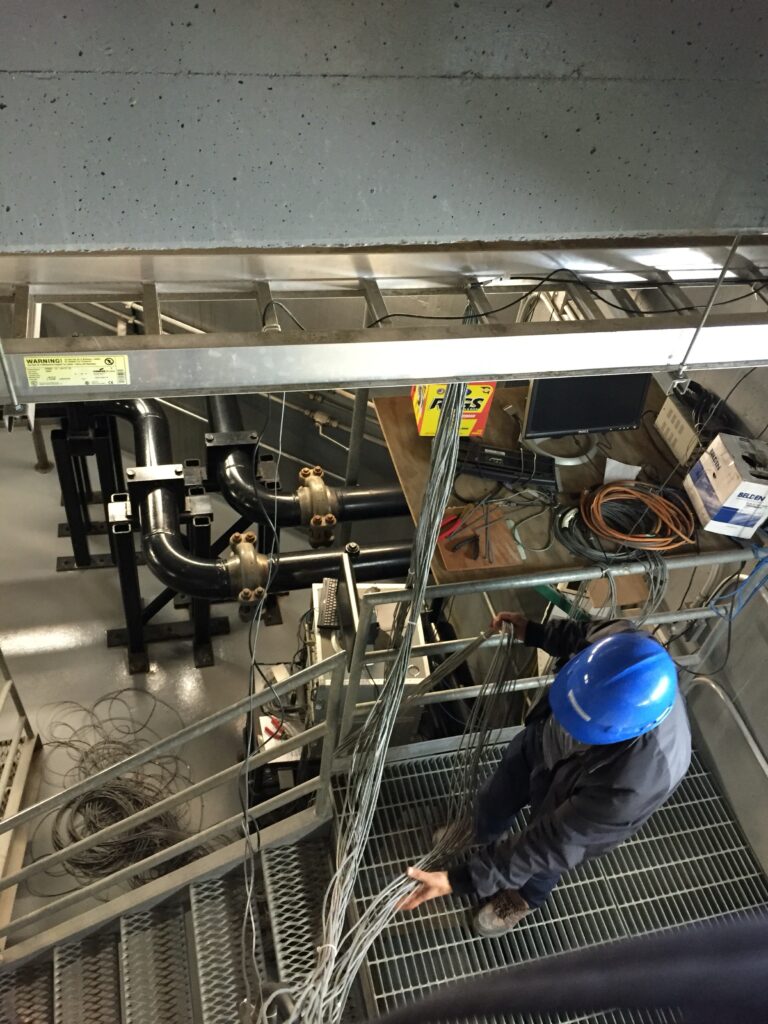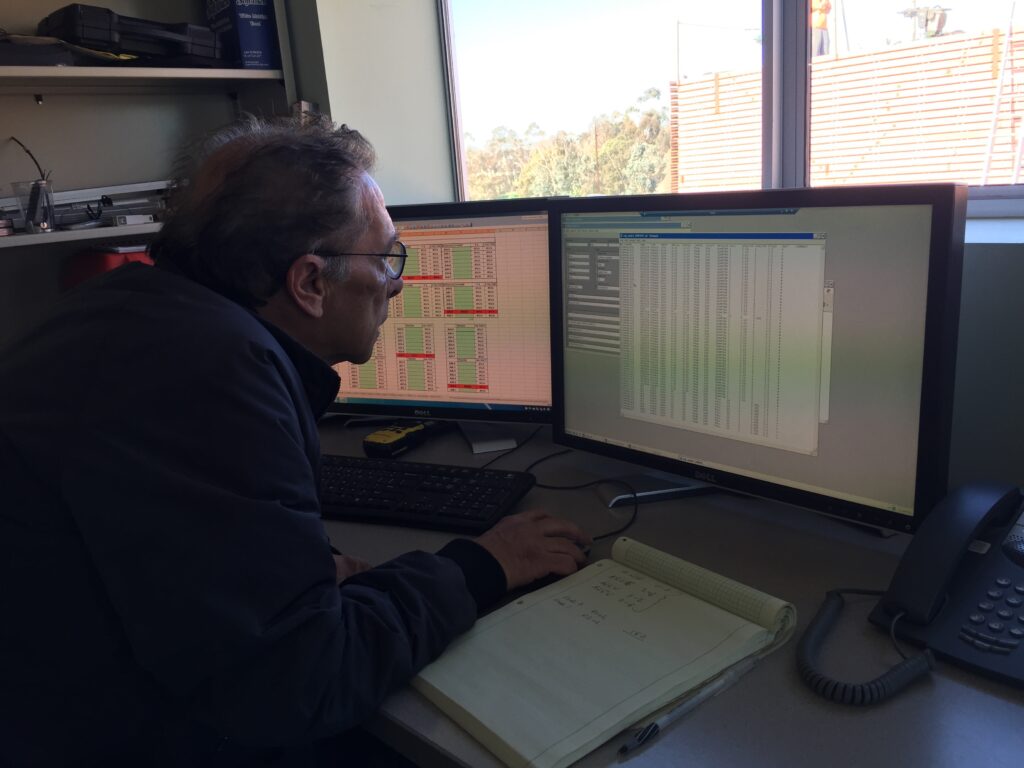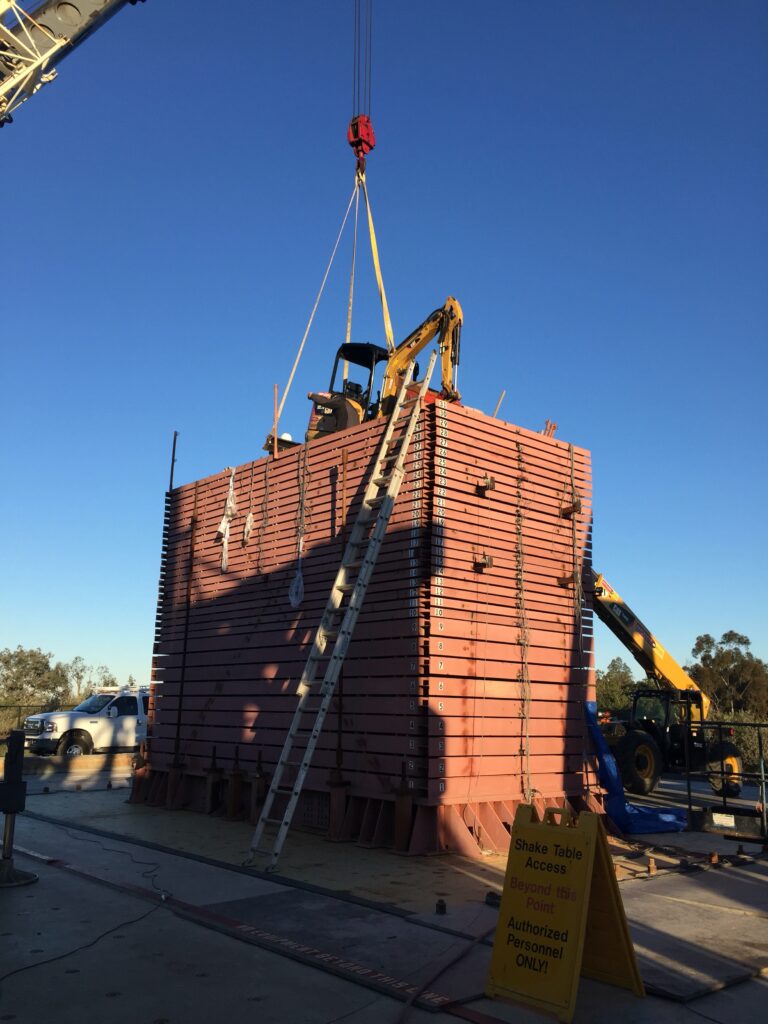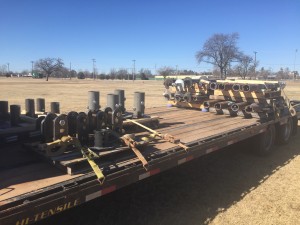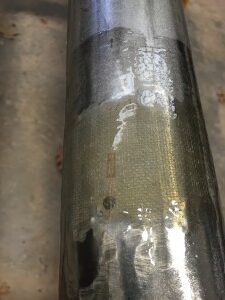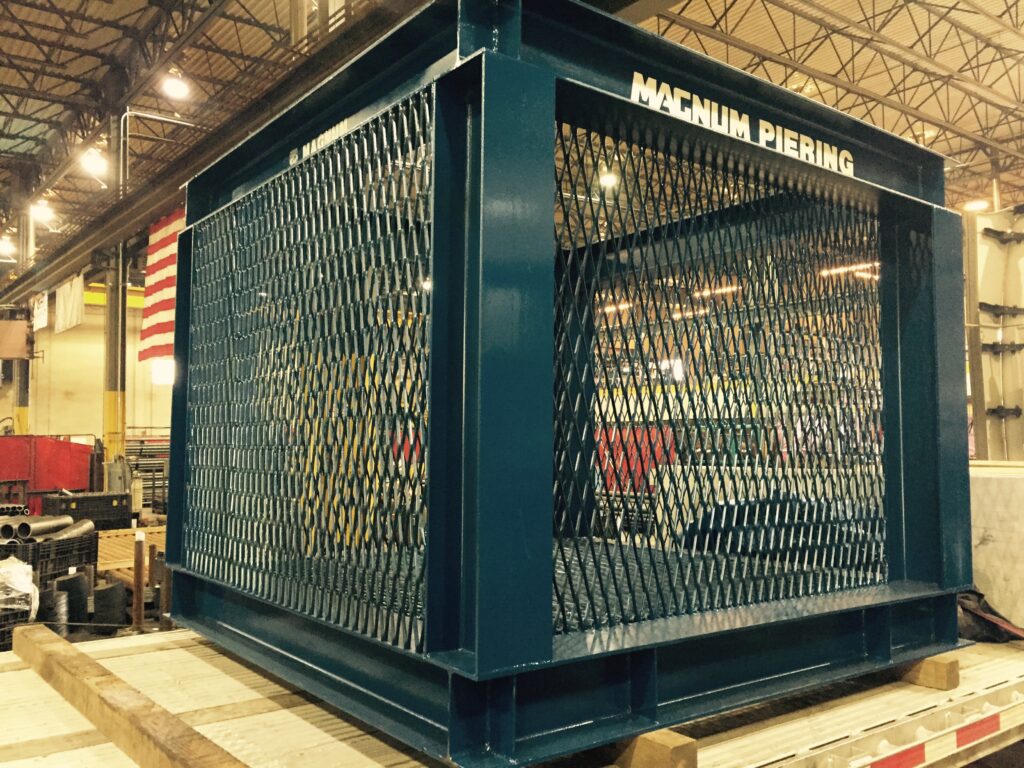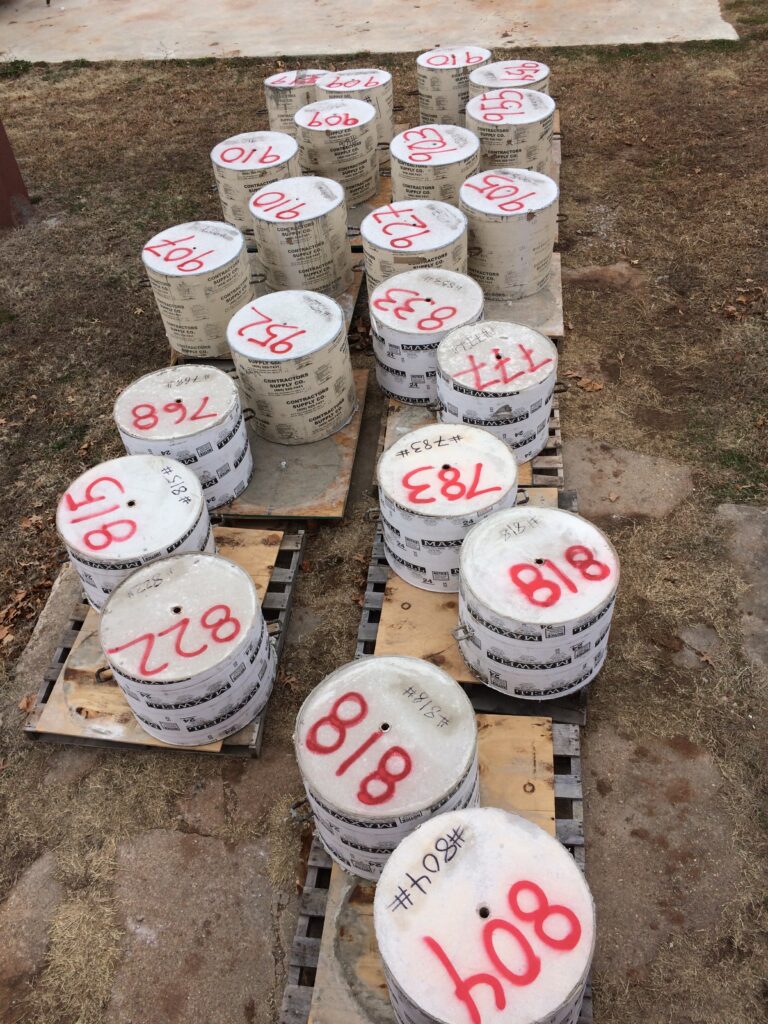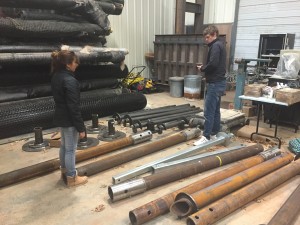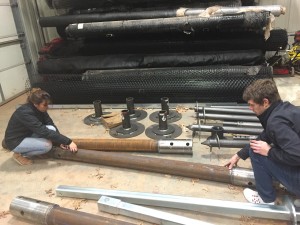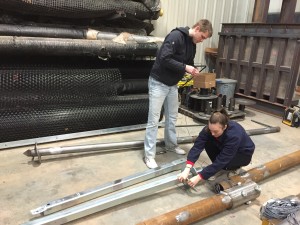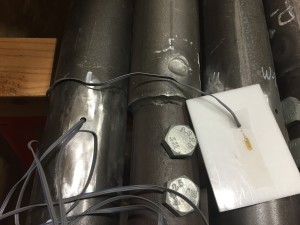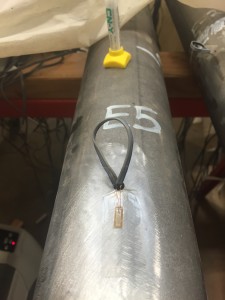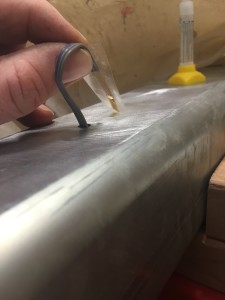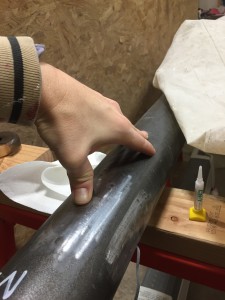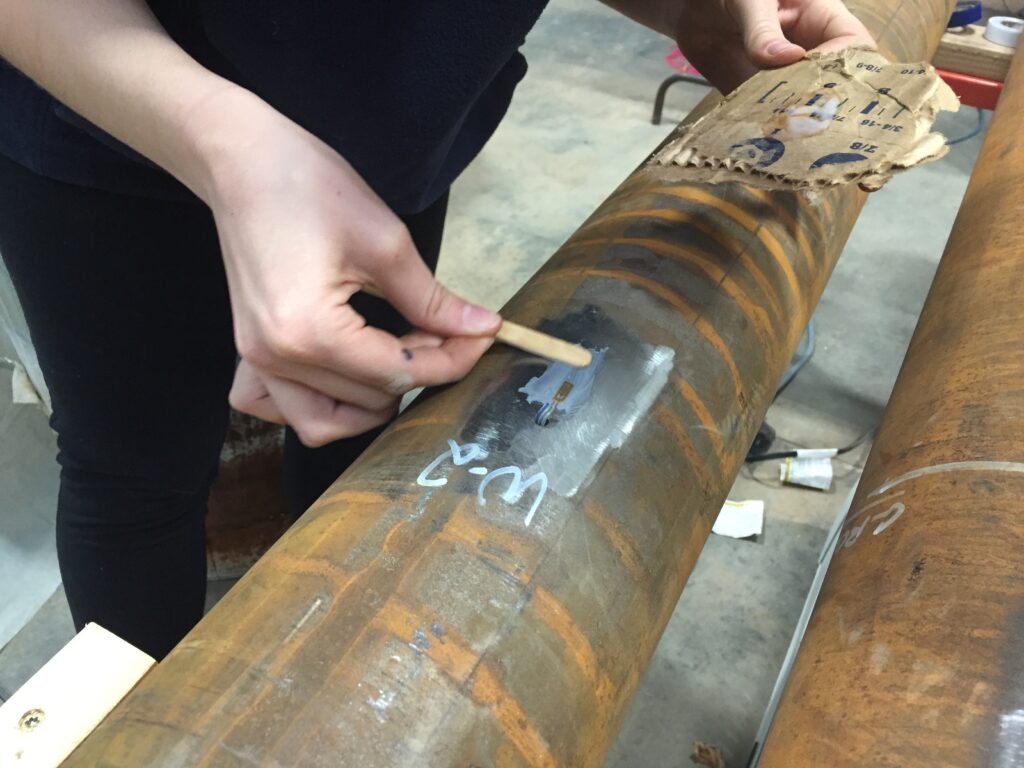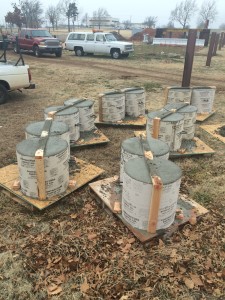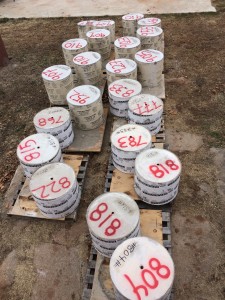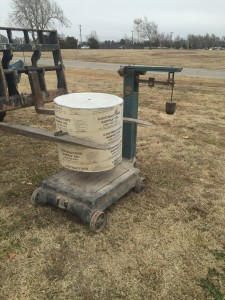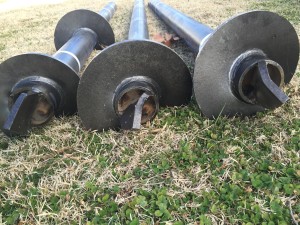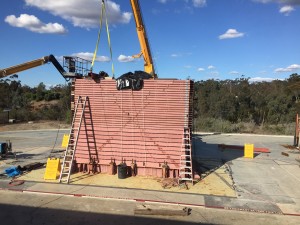This testing plan is tentative and will most likely change throughout the duration of the test due to inevitable delays. I will keep you posted on our daily activity and schedule as we move through the test.
Day 1 – Thursday, February 4th: Low-amplitude shake on the sand bed to determine base properties.
Day 2 – Monday, February 8th: Torcsill to install Piles. (4)
Day 3 -Tuesday, February 9th: Torcsill to install remainder of piles. (6)
Day 4 – Wednesday, February 10th: Connect the strain gages from the piles to cables that will run to the data acquisition – each pile will have 10-18 strain gages. Update: We lost 27 gauges, so we have 125 remaining. Five of us spliced all 125 cables and ran them down to the data acquisition. Connect instrumentation to data acquisition – 26 connections made.
Day 5 – Thursday, February 11th: Place accelerometers at pile head (10) and run cables to data acquisition.Continue to connect instrumentation – 16 connections made. Make adjustments to skids and shake out concrete donut weights.
Day 6 – Friday, February 12th: Continue to connect instrumentation
Day 7 – Tuesday, February 16th: Continue to connect instrumentation and check all instrumentation connections.
Day 8 – Wednesday, February 17th: To study the kinematic behavior of the helical piles, a series of shakes will be conducted. It is important to not create a gap between the pile and the soil at this point. Once the shaking is complete, the accelerometers will be removed from the piles heads, the caps will be placed and then the concrete donut weights will be stacked. The accelerometers will be reattached to the top of the masses.
Day 9 – Thursday, February 18th: Donut weights will continue to be stacked if necessary. Instrumentation will be checked and the next shaking sequence (to study the inertial behavior of the helical piles) will be started. Once the shaking is completed, the accelerometers from the pile masses will be removed, the concrete weights will be removed and the piles will be prepared for the skid.
Day 10 – Friday, February 19th: Continue to prepare 8 piles for skids and attach skid. Start to load skid with sand. Each skid can hold 30 kips of sand. Continue to load skid with sand.
Day 11 – Saturday, February 20th: Continue to load skid with sand if necessary. Re-attach accelerometers that were on the concrete weights to the skid.
Day 12 – Monday, February 22nd: Check instrumentation from pile skids and Commence the “pinned” condition shake table testing phase (UCSD). The same series of shakes will be conducted. After the shaking is complete, convert the skids to a “fixed condition” by the addition of 2-bolts per leg (16 bolts).
Day 13 – Tuesday, February 23rd: Commence the “fixed” condition shake table testing. The same series of shakes will be conducted. Decide if any further shaking needs to be done. Once shaking is complete, start deconstruction – removal of sand from the skids, removal of accelerometers from skids, removal of skids, unhook the strain gages, uninstall the piles.
Day 14 – Wednesday, February 24th: Continue to deconstruct the helical pile test with Torcsill’s help.
